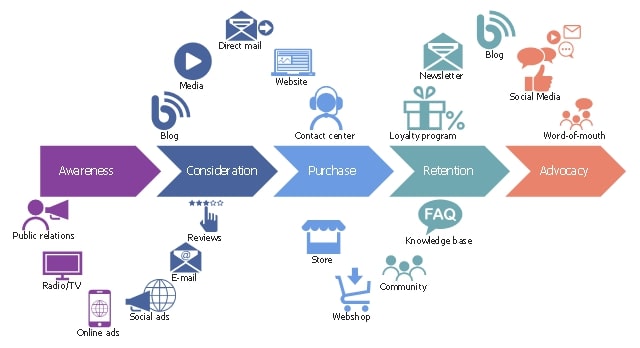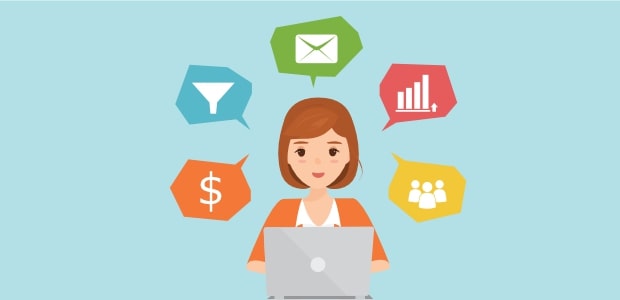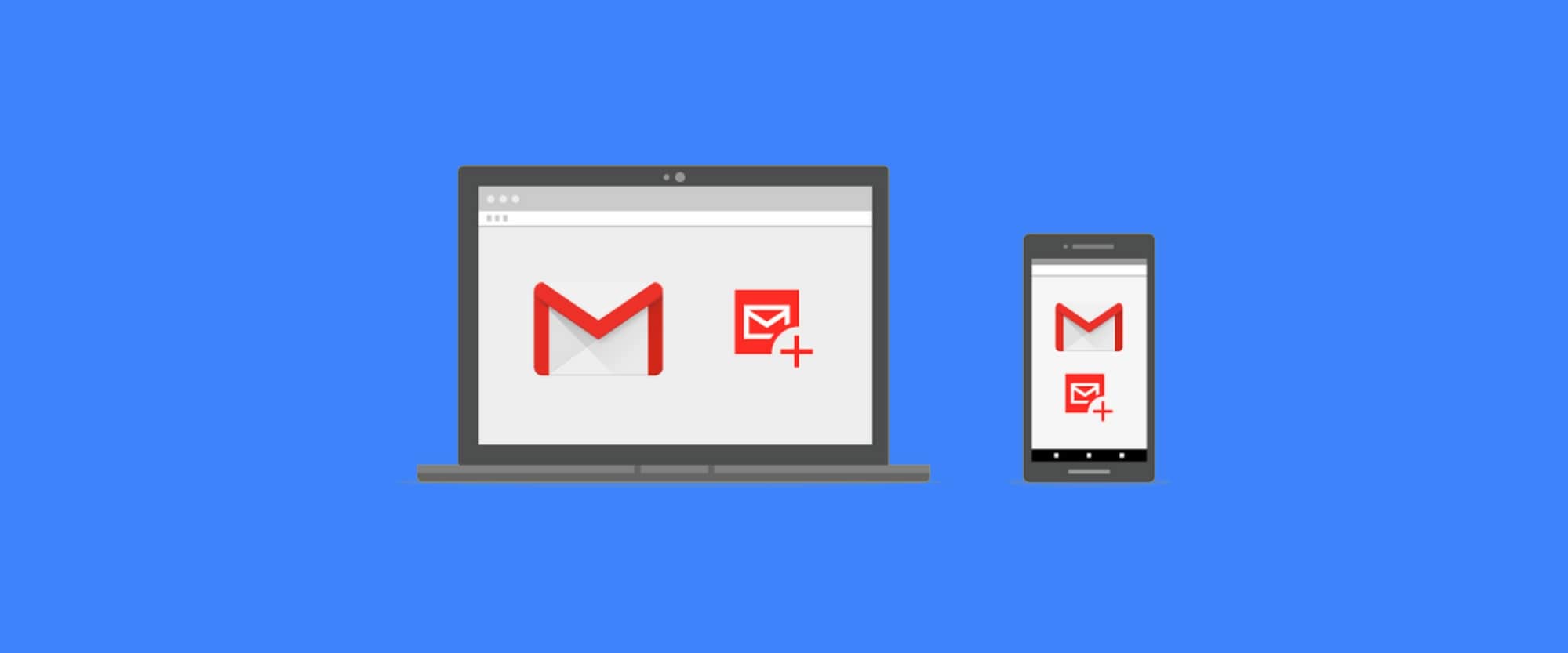10 Advanced Email Marketing Strategies for Better Results
One of the most difficult digital marketing methods to grasp is email. While it is true that email marketing still works, it is also true that email is a difficult channel due to the quantity of competition for a limited amount of reader attention.
Remember that email verification services into your advanced email marketing strategies are essential for maintaining a healthy and engaged subscriber base. It contributes to improved deliverability, higher engagement rates, and overall better results for your email campaigns.
Consider your inbox; chances are you’ve been effectively advertised to via email, and you may even have made a purchase as a result of getting a timely message. However, an incalculable amount of emails fail because they are either a) poorly executed or b) end up in your spam folder and are never seen. Even when emails do reach you, there are so many that you only read a few of them, usually based on the most enticing subject lines.
Exclusive Offer: Get Shopify 33 days for just $1 + The Online Store Starter Kit
Start your 3-day free trial, and enjoy your first month of Shopify for $1 plus the premium package designed especially for new Shopify merchants!
In this article, I will share with you 10 advanced advanced email marketing strategies that can help you to boost your email marketing results. Let’s jump right into the details!
10 Advanced Email Marketing Strategies to increase sales
1. Know Your Audience

One of the first steps in developing an effective email strategy for your ecommerce business is to determine who you’re attempting to target. Investing time in getting to understand your target audience is critical to your success now and in the future.
Every time you send an email to your list (or a part of your list), you create a chance to interact directly and personally with your prospective consumers in ways that Facebook and Twitter just do not allow. You are wasting your time and maybe hurting your reputation if you deliver communications that do not resonate with your subscribers or drive them to take action.
-
Tip #1: Access Your Customer Data - If you haven’t already, invest time diving into your existing customer data to better understand your customers. Look for patterns in age, geography, and spending behavior. You most likely have a sizable number of subscribers on your list who have never purchased from you. Use the information you can gather from previous clients to inform how you communicate with potential customers.
-
Tip #2: Create Audience Personas - If you want to think about who your target audience is in a broader sense, work with your team to create a few audience personas that you can refer to and enhance over time.
-
Tip #3: Examine Data from Your Social Media Pages – Your social media page statistics can also provide you with a plethora of information about your audience. Investigate demographic and interaction data for ideas on what type of material to deliver to your email subscribers and when to send it to them.
Once you are sure about who your audience is, you can start thinking about how you want to communicate with them via your email campaigns.
2. Build an Actual Strategy

If you’re like many other ecommerce business owners, you may not have ever taken the time to sit down and develop an actual email marketing strategy for your company. However, developing a particular strategy about what to do. This is why:
-
A strategy can assist you in focusing. You may take email marketing in a variety of directions. A technique can assist you avoid becoming too distracted. It can assist you in prioritizing your efforts and focusing on the most important topics.
-
A plan can assist you in determining what works and what does not. It’s difficult to determine what’s working and what isn’t if you don’t have a clear strategy in place.
-
A strategy can allow you and your team to stay on track. A strategy can assist you and your team meet deadlines, prioritize tasks, and achieve your objectives.
-
A plan can assist you in establishing specific goals. A strategy requires you to consider why. It forces you to consider why you want to send emails to your list and what you’re trying to accomplish.
-
Over time, a strategy can be built upon and evolved. It can feel like you’re beginning over every 6 months if you don’t have a clear strategy in place. You have no idea what worked, what didn’t, or why you chose one campaign over another. When you have a strategy in place, it is easier to learn from the past and consider what you need to do differently in the future.
-
A plan can pass through to many people. You must be able to delegate responsibilities as an ecommerce business owner in order to expand your business. When you take the time to develop a clear email strategy, it becomes much easier to delegate duties and tasks to someone else in your team.
Email marketing should never be a last-minute consideration. It requires the same level of care that other sections of your organization receive on a daily basis. You should not think of it as a one-time strategy that you can employ whenever you need a sales boost.
To get the most out of the channel, think deliberately, proactively, and frequently about the message that individuals on your list are receiving from your business. You must consider the big picture. This is where customer journey mapping comes into play.
3. Provide Appealing Sign-Up Freebies

People do not give their email address to just anyone. You need to provide a compelling reáon for people to sign up. Fortunately, people enjoy receiving freebies.
Consider the types of lead magnets you can offer that meet these criteria:
- particularly appealing to your target demographic
- related to the material on the pages where they would sign up
- Relevant to what you’re selling
4. Map The Customer Journey

When it comes to ecommerce email marketing, one of the most common mistakes is to solely send promotional emails to your leads. If you’re new to ecommerce, it can be difficult to think about what types of emails you should be sending aside from those that give discounts and free shipping alerts, but there are a variety of additional campaigns you can and should send in order to nurture relationships and build loyalty.
To go beyond the sales email and identify where the opportunities are, work on sketching out the actual journey that a typical customer that buys from you takes. The customer journey, or buyer journey as it is also known, is unique to each firm, but here is an example of what they typically look like:
As you can see, there are a few key stages that your prospects will move through as they progress toward purchasing. Awareness, Consideration, Purchase, Retention, and Advocacy are the stages.
As an email marketer, your objective is to figure out how to use email to assist consumers progress through the conversion and advocacy funnels.
Here are some examples of emails that you can send during each stage of the customer journey:
- Awareness: Welcome Emails, Blog Post Emails, Product Education Emails, Company Origin Story Emails.
- Consideration: Video Emails, Product Feature Emails, Abandoned Cart Emails, Promotion Emails, Customer Story Emails.
- Purchase: Order Confirmation Emails, Promotion Emails, Shipping Confirmation Emails.
- Retention: Thank You Emails, Promotion Emails, Feedback Emails, Recommended Product Emails, Video Emails.
- Loyalty: New Product Emails, Special VIP Offer Emails, Blog Post Emails.
- Advocacy: Referral Offer Emails, Customer Delight Emails, Customer Story Emails.
5. Create segmented lists of your clients’ subscribers

Once you’ve gathered enough relevant data points, developing different segmented lists will allow you to send customised emails on a large scale. Assume your client is a vehicle firm that is running a special deal in Texas.
You can select to target subscribers in Texas between the ages of 25 and 45 in order to send them individual email campaigns that are most relevant to them.
The objective behind segmented lists is to ensure that each subscriber receives material that is especially relevant to them, making it more engaging and personalized. According to a Janrain survey, 74% of internet customers are dissatisfied when they receive content that is inappropriate to their interests.
These categories provide each subscriber the impression that your clients’ brands understand who they are and what they care about most. When subscribers come to trust your customers’ brands as a result of the relationships you develop for them, the segments help to build brand loyalty.
6. Write Like a Human

You need to engage with your email subscribers on a personal level in order to persuade them to do the action you ultimately want them to take. To be effective, you must not only send the proper types of email marketing; you must also ensure that the messaging you include in your campaigns resonates with your target demographic.
When it comes to email marketing, words and writing style are quite important. The improper message or placement can lead to not just low CTRs, low open rates, and a lack of sales, but it can also cause them to unsubscribe from your list entirely.
Focus on writing like a real human being with a distinct personality to ensure that you’re generating messages that will resonate with your audience. Nobody wants to be sold to anymore; instead, they want to feel personally and authentically linked to the businesses they buy from.
Keep these following suggestions in mind to ensure that your email marketing campaigns have personality, style, and voice:
-
Tip #1: Avoid being too witty or funny. When you try too hard to sound creative or amusing in your email text, it can come across to receivers as inauthentic or aggressive.
-
Tip #2: Make use of active voice. Rather than saying, “the product will be shipped to you,” say, “we’re shipping your product to you very soon!”
-
Tip #3: Write as though you were speaking. Read your copy aloud to your subscribers before launching an email campaign. If something sounds funny or out of place to you, it will sound strange to your subscribers as well.
-
Tip #4: Confirm that your emails are coming from a real person. Use no-reply email addresses and don’t leave emails unsigned at the bottom. Instead, give your email campaigns individuality and a human touch by having them coming from a real person who can sign their name at the bottom of the message.
-
Tip #5: Don’t be afraid to use exclamation points, emoticons, or ALL-CAPS. The goal isn’t to write the perfect business email; rather, it’s to produce an email that connects with your audience, nurtures them, and eventually convinces them to try one of your goods. For certain brands, this may include breaking the rules and freely using exclamation marks, emoticons, or CAPS in emails.
Every day, your subscribers receive a large number of emails from various brands. Humanizing your email campaigns allows you to cut through the clutter and build closer relationships with the people you eventually want to convert.
7. Look for Personalization Opportunities

Personalization is another crucial part of effective email marketing. If you want individuals on your list to visit your product pages and buy from you, you must make them feel as if they have a personal relationship with you. Personalized emails may assist you in establishing and nurturing relationships, removing anxiety, creating excitement, and driving action.
Consider the following SmartrMail statistics, which demonstrate the power of customization in email campaigns:
- Emails with personalized messages are opened at a rate that is more than 30% higher than those without any personalisation.
- Personalized emails have a six-times increase in transaction rates.
- Eighty percent of consumers prefer it when retailers send them emails that recommend products based on their previous purchases.
You can customise your ecommerce emails in a variety of ways. Here are a few suggestions:
- Subject lines with first names and greetings product recommendation blocks that are tailored to each subscriber email campaigns based on seasonality or holiday
- Emails from abandoned shopping carts
- Viewing past emails that contain unique offers for certain geographic locations
8. Ask for Feedback

The third technique to improve the ROI of your email marketing efforts is to solicit regular feedback from your subscribers and consumers on their interactions with your business. This form of feedback enables you and your team to base your decisions on more than simply assumptions or numerical data. It provides a qualitative perspective that you would not be able to obtain without the assistance of your subscribers.
Ideally, you should solicit input throughout the customer experience. For example, you should inquire whether your subscribers have any questions regarding your items (before conversion)
- They are satisfied with the frequency with which you send emails to them.
- They love the type of material you deliver to them.
- They believe the offers and promotions you send are intriguing and relevant.
- They are pleased with the things you have delivered to them (after conversion)
- They would be willing to spread the word about your products and company to their friends.
- They have any issues or reservations concerning their shopping trip?
Sending feedback request emails on a regular basis will not only help you create trust and strengthen connections with subscribers and customers, but it will also provide you with the knowledge you need to improve and expand your business over time.
9. Use dynamic content with engaging design

While marketing automation and data points are important components of successful email marketing, they will have no influence on your clients’ subscribers unless the content is dynamic and the design is compelling.
Subscribers want to be able to relate to your brand in a meaningful way. Dynamic storytelling content, as well as informative, entertaining, and thought leadership pieces, can aid in the development of strong relationships with the customers of your customers.
Visuals and design templates in your emails are just as crucial as written information. Using unique email design grids, pictures, graphics, and colors can help capture the attention of each reader. It is also critical to employ responsive email design, as 63 percent of email opens occur on mobile devices.
Having a “stand-out” CTA is one of the most crucial aspects of any campaign. The placement, colors, and wording of a CTA all have an impact on whether or not a subscriber clicks on it.
10. Automate your email marketing campaigns

Marketing automation tools and excellent marketing teams are the most effective resources for implementing these tactics.
Marketing automation enables you to collect high-quality contact data, create segmented lists, provide targeted content at scale, and even employ compelling email design templates. Marketing automation will also assist you in using data analytics and integrations to learn more about your customers.
You can track where your traffic is coming from, how each subscriber interacts with your email campaigns, and look at statistics that go beyond click and open rates. These tools will assist you in reaching the appropriate individuals at the right time with tailored communications.
It is critical to identify the correct tools that work for both your agency and your clients. You and your client might work together to handle the software, or you could white-label the product and manage it on your own. Whatever method you choose to manage the software, make sure it contains the features you require.
Best Tool For Sending Advanced Marketing Emails

If you’re looking for a tool that can enable you to implement all the advanced strategies that you’ve learned from this article, we recommend you to try AVADA Email Marketing Automation. This is a feature-rich user-friendly tool that will help you create, run and manage sophisticated email campaigns easily and effectively.
Final words
That’s it! I hope this article has provided you with valuable information about advanced strategies for email marketing. Please feel free to leave comments below for further discussion on this topic.
New Posts






